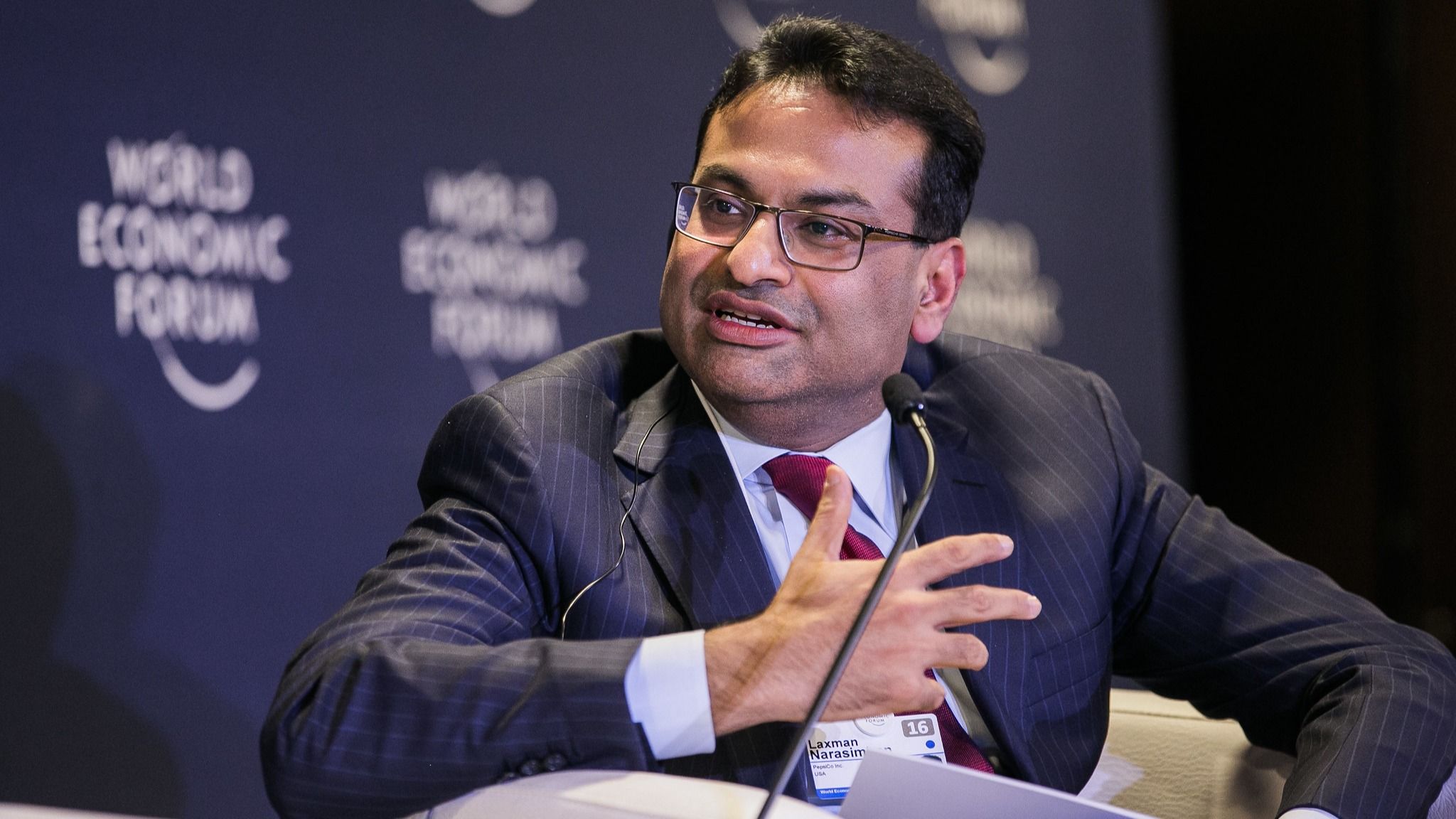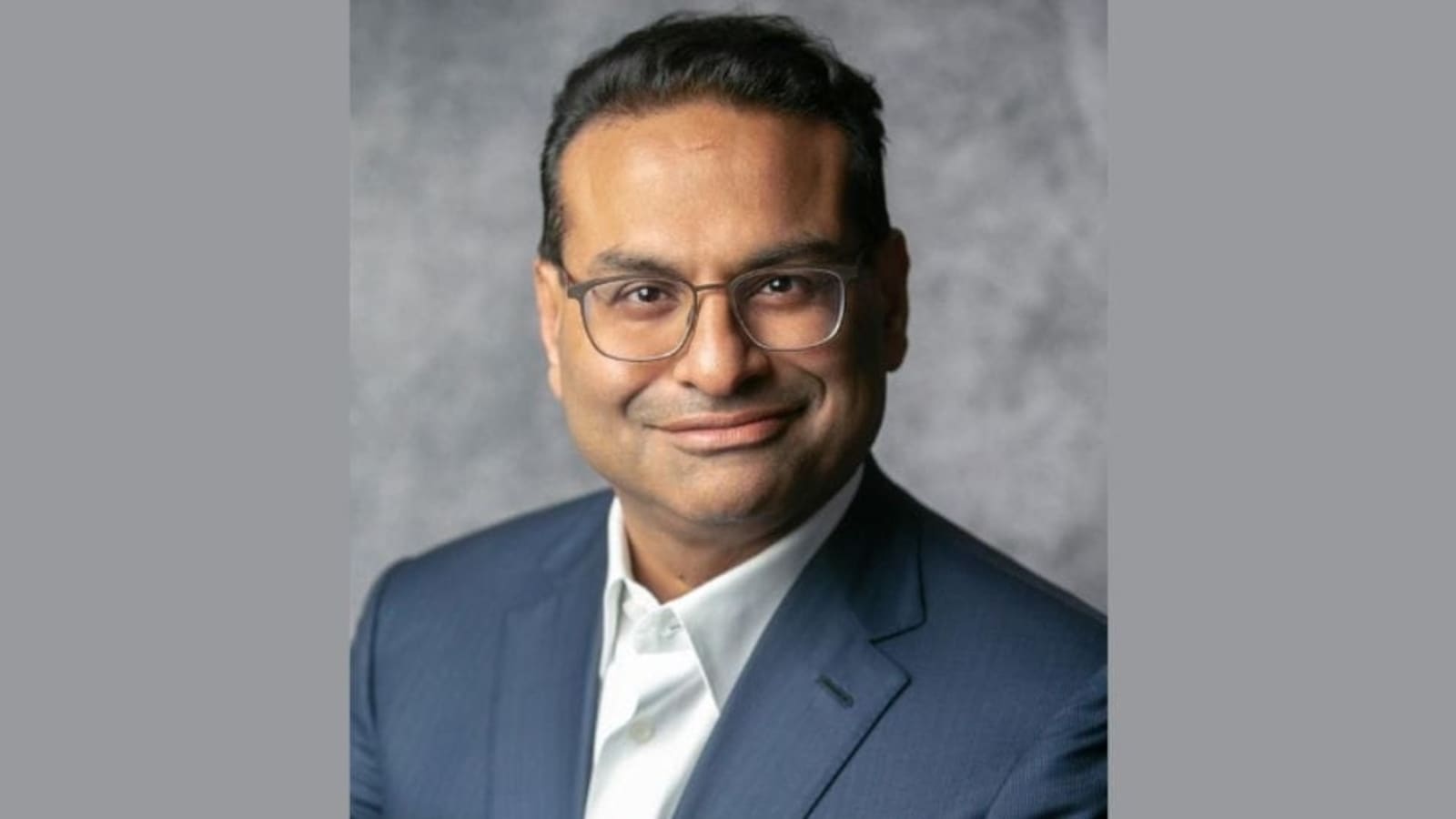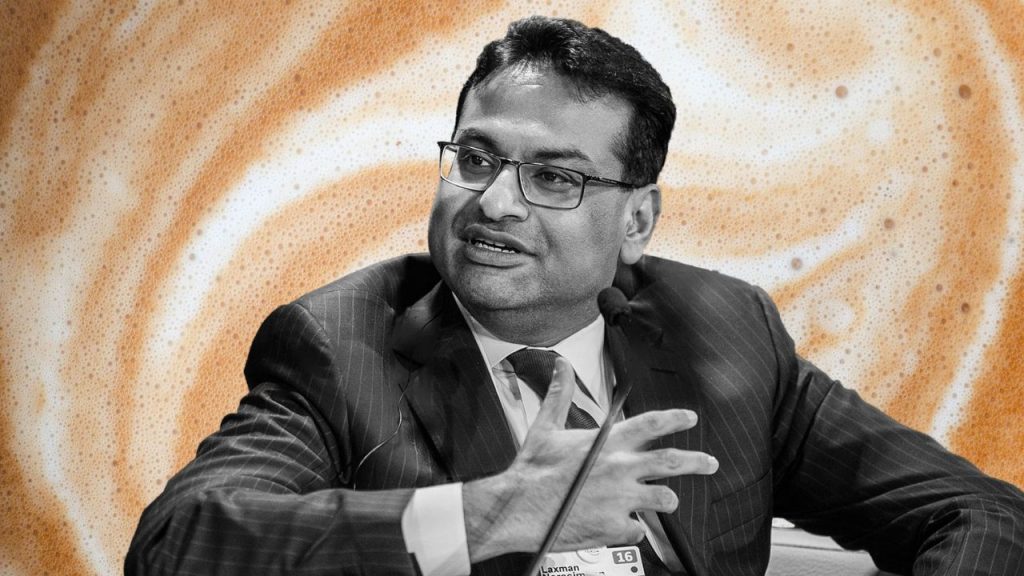Laxman Narasimhan’s Career Trajectory

Laxman Narasimhan is a seasoned business leader with a proven track record of success in the consumer goods industry. He has held leadership positions at several Fortune 500 companies, including PepsiCo, Reckitt Benckiser, and Starbucks, where he has consistently delivered strong financial performance and driven innovation. His career journey provides valuable insights into his leadership style, strategic thinking, and ability to adapt to diverse business environments.
PepsiCo
Narasimhan’s journey began at PepsiCo, where he joined in 1999 and worked for over 12 years. His early roles involved developing strategic marketing plans for PepsiCo’s flagship brands, including Pepsi, Gatorade, and Tropicana. He quickly rose through the ranks, demonstrating his analytical skills, strategic thinking, and ability to execute complex marketing campaigns. He was eventually promoted to President of PepsiCo’s Quaker Foods North America business, where he led a significant turnaround effort, driving growth and profitability.
Starbucks Under Laxman Narasimhan’s Leadership

Laxman Narasimhan took the helm of Starbucks in April 2023, inheriting a company facing a complex mix of challenges and opportunities. The coffee giant had experienced a period of growth, but also faced issues like declining customer satisfaction, increased competition, and a changing consumer landscape. Narasimhan’s leadership has been marked by a focus on innovation, operational efficiency, and customer-centricity, with the aim of reinvigorating the Starbucks brand and driving long-term growth.
Key Initiatives and Strategies
Narasimhan’s strategy for revitalizing Starbucks can be summarized as a multi-pronged approach focused on enhancing the customer experience, optimizing operations, and fostering innovation.
- Enhanced Customer Experience: Narasimhan has prioritized improving the customer experience through a series of initiatives. These include:
- Personalized Customer Service: This involves leveraging data analytics to understand customer preferences and tailor their Starbucks experience. This includes personalized recommendations, customized offers, and faster service.
- Digital Innovation: Starbucks has invested heavily in digital technologies, including mobile ordering, payment systems, and loyalty programs. These initiatives aim to streamline the customer experience and enhance convenience.
- Elevated Store Experience: Narasimhan has focused on improving the physical store experience, emphasizing a welcoming and comfortable atmosphere. This includes redesigned stores, enhanced menu options, and improved in-store amenities.
- Operational Efficiency: Narasimhan has implemented several strategies to improve operational efficiency and reduce costs. These include:
- Supply Chain Optimization: Starbucks has streamlined its supply chain to reduce waste and improve efficiency. This includes optimizing inventory management and leveraging data analytics to forecast demand more accurately.
- Technology Investments: The company has invested in technology to automate tasks, improve operational efficiency, and reduce labor costs. This includes automated brewing systems, self-service kiosks, and digital ordering platforms.
- Cost Management: Narasimhan has implemented cost-cutting measures, including reducing overhead expenses and negotiating better deals with suppliers. These measures aim to improve profitability and free up resources for investments in growth initiatives.
- Innovation and Growth: Narasimhan has emphasized innovation and growth as key pillars of his strategy. This includes:
- New Product Development: Starbucks has introduced new products and beverage offerings to cater to evolving consumer tastes. This includes expanding its plant-based options, introducing new flavors and seasonal specials, and exploring new categories like cold brew and nitro coffee.
- Global Expansion: Starbucks continues to expand its global footprint, targeting emerging markets with high growth potential. This includes opening new stores in Asia, Africa, and Latin America, adapting its offerings to local tastes and preferences.
- Partnerships and Acquisitions: Starbucks has pursued strategic partnerships and acquisitions to expand its reach and capabilities. This includes collaborations with food delivery platforms, partnerships with technology companies, and acquisitions of innovative coffee brands.
Impact of Initiatives
Narasimhan’s initiatives have had a positive impact on Starbucks’ financial performance, customer satisfaction, and employee morale.
- Financial Performance: Starbucks has reported strong financial performance since Narasimhan took over, with revenue and profit growth exceeding expectations. This can be attributed to a combination of factors, including:
- Increased Customer Spending: Improved customer experience and new product offerings have led to increased customer spending and higher average transaction values.
- Operational Efficiency: Cost-cutting measures and supply chain optimization have improved profitability and freed up resources for investments in growth initiatives.
- Global Expansion: Entering new markets has contributed to revenue growth and expanded the company’s customer base.
- Customer Satisfaction: Narasimhan’s focus on improving the customer experience has resulted in higher customer satisfaction levels. This can be seen in:
- Improved Net Promoter Score (NPS): Starbucks has seen an increase in its NPS score, indicating higher customer loyalty and satisfaction.
- Positive Customer Feedback: Customers have expressed positive feedback on the improved store experience, personalized service, and new product offerings.
- Increased Brand Loyalty: Starbucks has seen an increase in customer loyalty, with customers returning more frequently and spending more per visit.
- Employee Morale: Narasimhan has placed a strong emphasis on employee engagement and well-being. This has resulted in:
- Improved Employee Satisfaction: Starbucks has seen an improvement in employee satisfaction, with employees reporting higher levels of job satisfaction and engagement.
- Reduced Employee Turnover: Starbucks has experienced a reduction in employee turnover, indicating that employees are more satisfied with their work environment and opportunities for growth.
- Enhanced Employee Empowerment: Narasimhan has empowered employees to make decisions and contribute to the company’s success, fostering a sense of ownership and responsibility.
Challenges and Opportunities
Starbucks faces several challenges and opportunities under Narasimhan’s leadership.
- Competition: The coffee industry is highly competitive, with established players like Dunkin’ Donuts, McDonald’s, and Peet’s Coffee, as well as emerging independent coffee shops. Starbucks must continue to innovate and differentiate itself to maintain its market share.
- Changing Consumer Preferences: Consumer preferences are constantly evolving, with a growing demand for healthier and more sustainable options. Starbucks must adapt its offerings to meet these changing needs, focusing on plant-based alternatives, ethically sourced coffee, and sustainable packaging.
- Global Economic Landscape: The global economic landscape is uncertain, with potential risks from inflation, rising interest rates, and geopolitical instability. Starbucks must navigate these challenges by optimizing costs, diversifying its revenue streams, and adapting to changing market conditions.
- Technological Disruption: The coffee industry is undergoing rapid technological disruption, with new players emerging and innovative technologies transforming the way coffee is produced, distributed, and consumed. Starbucks must embrace these changes, investing in digital technologies, partnering with innovative companies, and developing new business models to stay ahead of the curve.
Laxman Narasimhan’s Leadership Style and Impact

Laxman Narasimhan, the current CEO of Starbucks, has a unique leadership style that has already begun to shape the company’s direction. His background in consumer goods and his experience in leading global organizations provide a distinct perspective that sets him apart from his predecessors.
Narasimhan’s Leadership Style
Narasimhan’s leadership style is characterized by a strong focus on data-driven decision-making, a commitment to innovation, and a clear vision for the future of Starbucks. He believes in empowering his team and fostering a culture of collaboration. He has a reputation for being a strategic thinker who is adept at navigating complex challenges.
Strengths of Narasimhan’s Leadership Style
- Data-driven approach: Narasimhan is known for his reliance on data and analytics to inform his decisions. He believes that data can provide valuable insights into customer behavior, market trends, and operational efficiency. This approach allows him to make informed decisions that are aligned with the company’s overall goals.
- Focus on innovation: Narasimhan is committed to driving innovation across all aspects of Starbucks’ business. He believes that the company needs to constantly evolve and adapt to stay ahead of the competition. He has already implemented initiatives to enhance the customer experience, expand into new markets, and develop new products and services.
- Empowering leadership: Narasimhan believes in empowering his team to take ownership and make decisions. He fosters a culture of collaboration and open communication, where employees feel valued and supported.
Weaknesses of Narasimhan’s Leadership Style
- Emphasis on efficiency: Some critics argue that Narasimhan’s focus on efficiency and data-driven decision-making can sometimes come at the expense of creativity and intuition. There is a risk that his approach may stifle innovation and lead to a more rigid corporate culture.
- Limited experience in the coffee industry: While Narasimhan has extensive experience in consumer goods, he lacks deep knowledge of the coffee industry. This could pose a challenge as he navigates the complexities of the coffee supply chain and the nuances of customer preferences.
Comparison with Previous Leaders, Laxman narasimhan
Narasimhan’s leadership style differs significantly from that of his predecessors, Howard Schultz and Kevin Johnson. Schultz, the founder of Starbucks, was known for his charismatic leadership and his focus on creating a unique brand experience. Johnson, on the other hand, was more focused on operational efficiency and expanding the company’s global reach. Narasimhan’s approach is a blend of these two styles, emphasizing data-driven decision-making, innovation, and a strong commitment to customer experience.
Impact on Starbucks’ Culture, Values, and Performance
Narasimhan’s leadership has already begun to impact Starbucks’ culture, values, and overall performance. He has introduced a new strategic framework that focuses on delivering a premium customer experience, driving innovation, and expanding into new markets. He has also made changes to the company’s organizational structure, empowering employees and fostering a more collaborative work environment.
Impact on Culture
Narasimhan has placed a strong emphasis on building a culture of inclusion and diversity. He has also implemented initiatives to improve employee engagement and satisfaction. These changes are intended to create a more positive and productive work environment, which will ultimately benefit customers.
Impact on Values
Narasimhan’s leadership is characterized by a commitment to ethical sourcing, sustainability, and social responsibility. He believes that Starbucks has a responsibility to make a positive impact on the world. He has already taken steps to reduce the company’s environmental footprint and support communities in coffee-producing regions.
Impact on Performance
Narasimhan’s focus on data-driven decision-making and innovation is expected to drive growth and improve profitability. His strategic initiatives, such as expanding into new markets and developing new products and services, are expected to create new revenue streams and enhance the company’s competitive position.
Laxman Narasimhan, the new CEO of Starbucks, faces a challenging landscape marked by intense competition and evolving consumer preferences. This is evident in the ongoing battle for market share between coffee giants like Starbucks and fast-casual restaurants like Chipotle, which have expanded their beverage offerings.
As detailed in this article, starbucks chipotle , Narasimhan’s leadership will likely focus on innovative strategies to maintain Starbucks’ position as a dominant force in the evolving coffee and food landscape.
Laxman Narasimhan, a seasoned executive with a background in consumer goods, took the helm of Starbucks in 2022 after a tumultuous period for the coffee giant. Prior to his current role, Narasimhan served as CEO of ceo of chipotle from 2014 to 2019, where he spearheaded efforts to modernize the brand and expand its global footprint.
His experience navigating the challenges of a fast-growing, consumer-centric business has likely shaped his approach to leading Starbucks through its own period of transformation.
